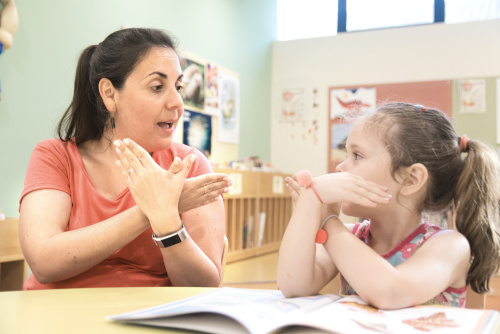Students with disabilities tend to show greater learning losses over the summer, and at times grow at academically higher rates than peers without disabilities, according to a new study showing detailed insight on academic growth among students with disabilities.
The new research, Understanding differential growth during school years and summers for students in special education, comes from NWEA, a nonprofit research-based provider of assessment solutions and learning services.
Using a five-year cohort of 4,228 students (kindergarten through fourth grade) in 109 U.S. public schools that voluntarily provided student-level special education program information, the research study examined how academic achievement and growth in achievement compared between students with and without disabilities. (Disability category was not available at the student-level. The study used “ever being in special education services” as a proxy for students with a disability.)
“To the best of our knowledge, no study has examined within-year growth (fall to spring) and summer learning for students with disabilities, and how these differences in learning during the school year versus summer may shape disparities for students with and without disabilities,” said Elizabeth Barker, research scientist at NWEA, “We wanted to challenge former research that only looked at one snapshot in time and see what trends in learning we can note and provide a better picture of the learning patterns of students with disabilities.”
The study found three main insights:
Students with disabilities entered kindergarten with lower test scores in both reading and math than students without disabilities. In addition, while students with disabilities did score similar to the national mean in the fall of kindergarten, their academic growth was slower than their peers’ in the kindergarten year, so that they fell behind. This suggests that providing supports during early childhood and preschool grades can help ensure SWDs begin on track with their peers.
During some years, students with disabilities grew academically at higher rates in reading and math during the school year compared to students without disabilities. In reading, first, third and fourth grades were higher-rate growth years, and in math, growth was higher in first and second grade. This result challenges deficit narratives about the academic potential of students with special needs and shows that, with appropriate support, students with disabilities can grow as much or more than their peers without disabilities.
Students with special needs showed greater academic losses over the summer than students without disabilities across all grades. While they often showed high growth rates during the school year, greater losses in reading and math for students with disabilities over the summer accumulated to shape the expanding disparities between students with and without disabilities. This suggests that students with disabilities are forced to make up for more lost time than other students and our schools should consider providing additional supports and services.
While this initial look did not include data from this past year, its findings raise important questions about how students with disabilities fared through the immense disruptions of the COVID-19 pandemic. Over the last year, some students received instruction online, some in hybrid models, while others received no instruction for months. Students with special needs are likely to be disproportionately impacted because the support they need can be more difficult to provide or less effective in a remote setting. If they tend to lose more ground than students without special needs when outside of formal instruction, we can anticipate uneven impacts and differential unfinished learning from this past year.
As education and policy leaders look at ways to respond to the needs generated after a year of learning during a pandemic and set a path to support all students, NWEA, along with the National Center for Learning Disabilities (NCLD) recommends these actions:
- Invest in lasting change: States and districts must invest recovery funds specifically for students with disabilities. To ensure students succeed in the long term, NCLD says states and district should focus funding on high-quality, accessible and inclusive academic instruction, inclusive and culturally responsive social-emotional learning, effective progress monitoring and accurate evaluations for specialized instruction, and meaningful family support and engagement. Read more about the specific recommendations for recovery funds: http://ncld.co/RSLF
- Kindergarten matters: Educators and research must identify and provide effective support for struggling students earlier to foster their academic growth in kindergarten. The lower growth seen in our study for students with disabilities suggests missed learning opportunities during this critical kindergarten year and may indicate a need for better identification of students who are struggling and supporting them through a holistic approach that includes (for example) specialists like speech language pathologists, learning specialists, or behavioral specialists.
- Extend the school year: Educators, policy makers and researchers must explore how extended school year services may support learning for students with disabilities. Summer learning losses were substantially higher for students with disabilities than those without. This calls for more research to address extended school year services and the potential impact of increasing access to learning programs over the summer.
“This research validates what we know about students with disabilities: they are just as capable as students without disabilities and have been trapped in a system that makes it hard to achieve at high levels. The COVID-19 pandemic and emergency funds given to schools present an incredible moment to rethink how we support students early and design learning pathways for all students. It is time to change the system for good so that it finally fits students, rather than forcing students to fit within the system,” said Meghan Whittaker, Director of Policy & Advocacy at NCLD.
- The evolving requirements of a K-12 school network - April 24, 2024
- A bungled FAFSA rollout threatens students’ college ambitions - April 24, 2024
- How digital tools and AI can enhance social studies - April 23, 2024

